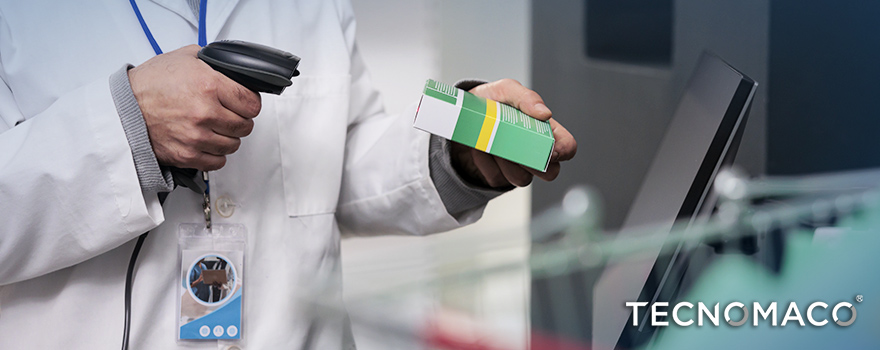
Pharmaceutical packaging, one of the most innovative sectors in Italy, plays a key role in ensuring product integrity, traceability and compliance with EU regulatory requirements.
The ability to trace the path of a medicine along the entire distribution chain is essential to prevent counterfeiting, which not only harms manufacturers but also compromises patient safety. This mechanism is also indispensable for monitoring the supply of medicines to hospitals and pharmacies, so as to obtain an overview of consumption and optimise production according to need, reducing waste and limiting environmental impact.
The must for safety
Up to now, traceability in our country has been entrusted to the optical sticker, which carries the identifying information on the medicine: AIC (marketing authorisation) code, commercial name of the medicine, AIC holder (legal person responsible for marketing), unique progressive package number. The process involves a centralised database at the Ministry of Health, in which the movements of individual packs are collected and recorded, starting with the production and supply data of the numbered stickers. By 2025, however, Italian companies will have to adapt to the European serialisation system. As of 2019, in fact, the FMD (Falsified Medicines Directive) came into force in all European countries, with the exception of Greece and Italy, which had a 6-year derogation. The anti-counterfeiting directive 2011/62/EU aims to equalise the safety features of medicines within the EU to “enable the verification of authenticity and identification of individual packs and provide evidence of tampering”.
The FMD requires each package to be equipped with safety features, a unique identifier and an anti-tampering-device (Atd), which guarantees the integrity of the package. The unique identifier contains 4 essential pieces of information: product code, serial number, batch number, expiration date. This system, which certifies the authenticity of the medicine and enables its traceability throughout its life cycle, requires the use of cutting-edge technology, which will increasingly find its way into the pharmaceutical sector in the future.
Intelligent production
The combined use of innovative technologies helps ensure the authenticity, safety and traceability of the medicine throughout the entire supply chain, from production to final consumption. Among the latest tools are a number of smart technologies that are becoming increasingly popular in drug research, development and production.
Blockchain: a technology that ensures control at logistic level by tracking the complete path of the medicine from production to distribution, thus avoiding any possibility of error or tampering.
Artificial Intelligence and Machine Learning: used for the discovery of new pharmaceutical compounds and the personalisation of therapies; they allow production to be optimised according to expected demand, thus avoiding overstocking or shortages of medicines.
Robotics: used to improve efficiency, precision and safety in various processes, from the automation of laboratory tests to precision surgery, from the optimisation of pharmaceutical packaging procedures to storage systems.
Big data and Analytics: used to analyse large amounts of clinical data, they enable the identification of correlations and facilitate the development of new therapies; they facilitate the optimisation of manufacturing processes, reducing processing times and ensuring the quality of pharmaceutical products.
Virtual and Augmented Reality: functional for the education and training of medical personnel, they can be used to simulate therapies and treatments in order to educate patients on the correct administration of medicines.
Sensors and Internet of Things (IoT): help to improve the quality and efficiency of production processes, prevent errors and ensure the safety of medicines; the use of IoT technologies enables real-time tracking and monitoring of the supply chain to avoid shortages and predict future demand.
Social, economic and environmental sustainability
Developing medicines in a more sustainable way does not only mean reducing the environmental impact of manufacturing processes, but also improving the therapeutic efficacy, ensuring patient-centricity and the right to healthcare. In the coming years, in order to respond to global challenges, companies in the sector will be called upon to take a series of actions that protect the ecosystem and ensure equity and well-being at the same time:
– reduce environmental impact in research and production processes;
– improve energy efficiency, reduce consumption and adopt renewable energy sources;
– focus on green packaging, using recyclable materials and optimising design to reduce material use;
– implement recycling programmes and responsible pharmaceutical waste management;
– adopt Corporate Social Responsibility (CSR) practices in favour of the environment and the community, including through collaboration with public bodies and non-governmental organisations;
– initiate training and awareness-raising activities for internal staff on the issue of sustainability;
– favouring access to medicines, through a fair price policy, the accessibility of innovative therapies, and the availability of essential medicines in all geographical areas and in all strata of the population.